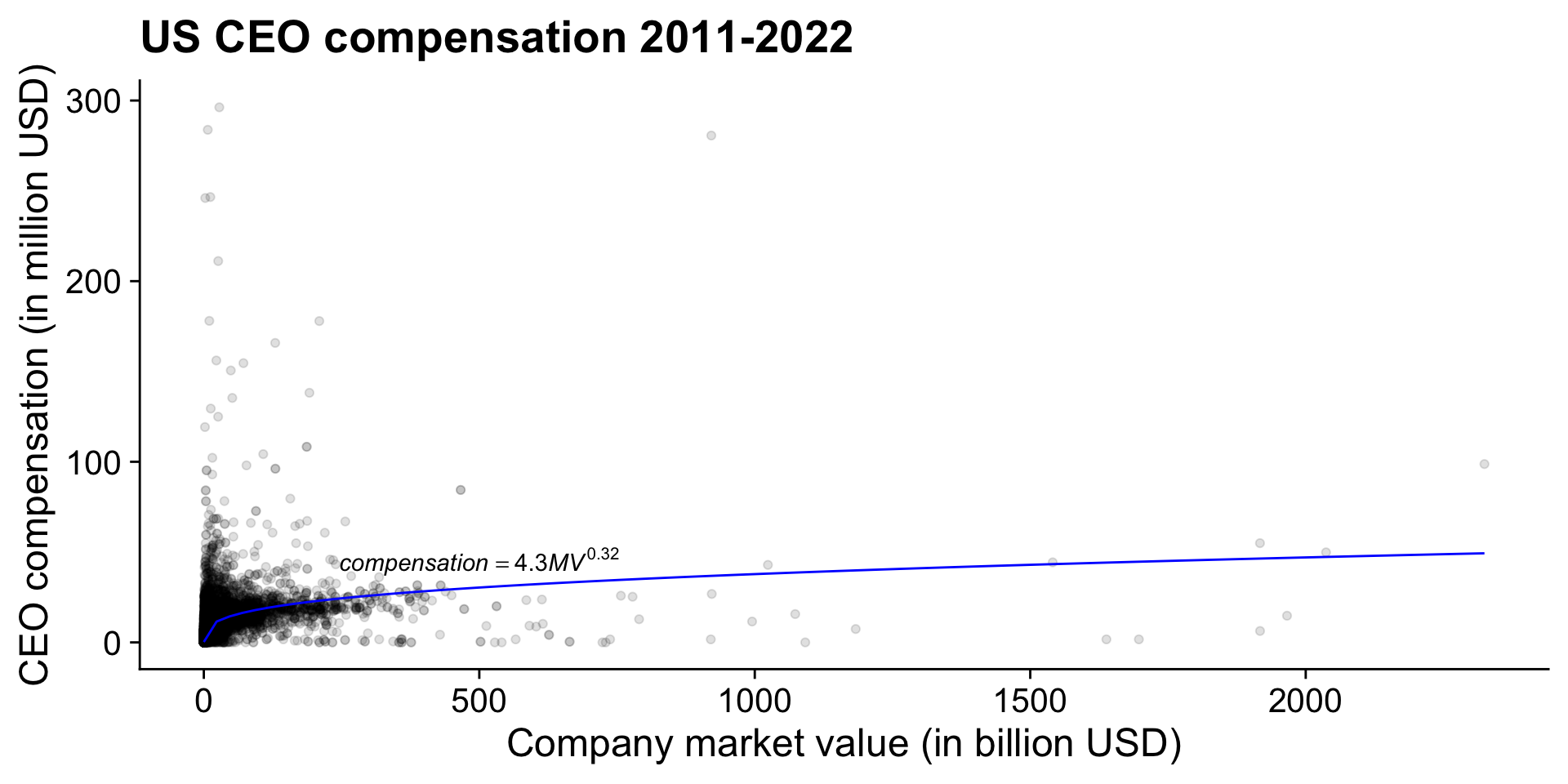Introduction to Research Methods in Finance and Accounting
What is this unit?
How to do empirical research
- The connection between theory and the observed data
- The connection between practical knowledge and what you can investigate
- The appropriate statistical tests and code
Different Modules
- The research process and basic data skills in
R(week 1 - 3) - Research design (week 4 - 6)
- Advanced regression (week 7 - 9)
- Time series analysis 10 - 12)
Assessment
No Exam
(Almost weekly) Assignments (70%)
- Homework: Practical Issues (0%) (3 March)
- Assignment 1: Theory and Regressions (10%) (10 March)
- Assignment 2: Regression and control variables (10%) (17 March)
- Assignment 3: Research Design (10%) (7 April)
- Assignment 4: Event Study (10%) (28 April)
- Assignment 5: Machine Learning (10%) (5 May)
- Assignment 6: Simulation Research Design (20%) (26 May)- Proposal and presentation (30%)
- Pitch (10%) (31 March)
- Proposal (10%) (12 May)
- Presentation (10%) (Probably Thursday 20 July)The first two weeks
CEO compensation
This is not my area of expertise!
Topic
Completely based on Edmans and Gabaix (2016) in Journal of Economic Literature.
- The level of CEO compensation
- CEO incentives
Firm production function
V=TαT(KαK)αK(LαL)αL
αT+αK+αL=1
- V= The value of the firm
- K= Capital of the firm
- L= Labour of the firm
- T= CEO talent/skills/ability/experience
CEO decision
maxK,LWT=V−wLL−rK
- WT= wage for CEO with talent T
- wL= labour unit costs
- r= cost of capital (or return on capital for investors)
Relation between size and CEO wage
WT=αTV
In this model, the driving force is that more talented CEOs grow the business to a bigger size and they earn more money when they create more value.
Data: Compensation-Value

How does research work?
The research process
Summary
- Make assumptions
- Derive relationship between measurable quantities
- Compare the theory and the data
Literature search
Start of literature search
- Don’t start too narrow!
- Review articles and journals
- Journal of Economic Literature
- Journal of Accounting Literature
- A*/A journals
Plan Your Year!
Signs of bad workload management
- Irregular sleeping habits
- Loss of motivation
- Postponing difficult tasks
Working with a supervisor
- The role of the supervisor
- Guide you towards a feasible research project
- Help you finish the dissertation
- Work process
- Schedule weekly or fortnightly meetings
- Submit writing or data analysis before every meeting.
- Add a tl;dr section.
- Your supervisor is not your copy-editor, let them know when you submit an “early” draft.
- Tell your supervisor what has changed
- Clarify the sample and the main variables in tables
- Tell your supervisor what the main table or figure is
Managing the workload (40 hours per week)
Plan ahead (with your supervisor) towards major deadlines
It’s okay to submit partial assignments, as long as you make progress. (Especially for programming exercises)
Keep writing!
Reach out when you need help with planning or when you feel overwhelmed.
- stijn.masschelein@uwa.edu.au
- UWA Counselling services
Homework
Questions
Answer in Quarto (
.qmd) format.File > New File > Quarto Document ... >You can use the code examples that I used in the video. I have uploaded the file to LMS. Use a different level 2 header for each question. Use R chunks to
- Load the CEO compensation data from LMS so that you can work with it.
- Print the dataset with only the CEOs without a cash bonus in 2013. You do not need to print the whole dataset. The default number of lines is sufficient.
- Calculate the number of observations, and the average and median bonus per year for the entire dataset.
Click the
Renderbutton and upload theqmdandhtmlversion to LMS.